
St. Isaac's Cathedral (Cathedral of St. Isaac of Dalmatia) - the largest and most famous church in St. Petersburg, which is the dominant and second tallest building, after Peter and Paul Cathedral, in the center of St. Petersburg.
St. Isaac's Cathedral is one of the greatest and largest domed structures in the world, second only in size to the cathedrals of St. Peter in Rome, St. Paul in London and Santa Maria del Fiore in Florence.
The height of St. Isaac's Cathedral is 101.5 meters. Its dina is equal to 111.28 meters. And the width is 97.6 meters.
At a height of 43 meters, around the drum of the dome of St. Isaac's Cathedral, there is a colonnade-a circular viewing platform that gives a magnificent 360-degree view of St. Petersburg.
The cathedral was consecrated in the name of St. Isaac of Dalmatia, on whose memorial day Tsar Peter I was born (May 30, according to the Julian calendar).
Today St. Isaac's Cathedral is an Orthodox church, an outstanding monument of Russian architecture of the 19th century, one of the symbols and an integral part of the architectural appearance of St. Petersburg.
It has the status of a museum. The cathedral also hosts services and concerts.
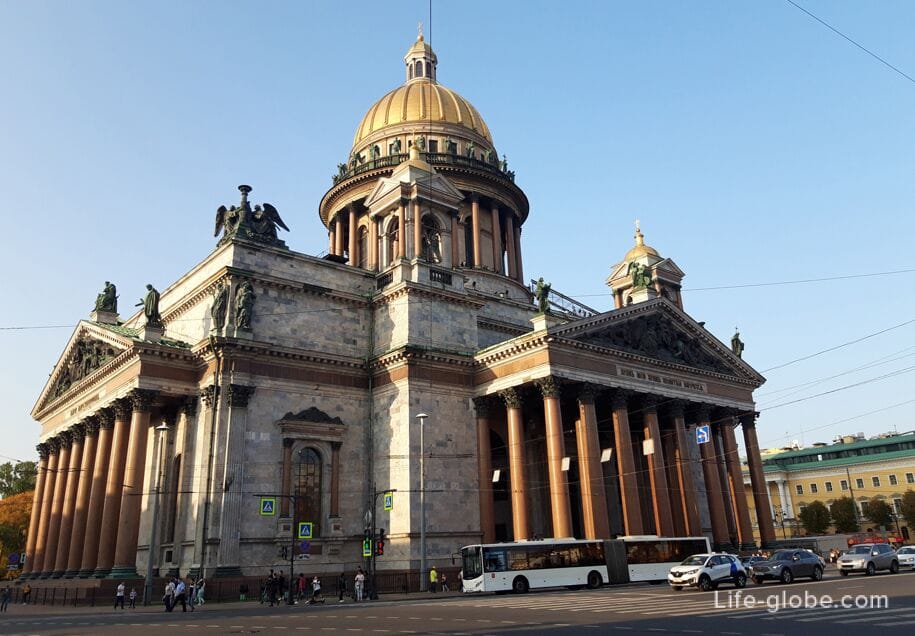
The existing St. Isaac's Cathedral is the fourth church built in St. Petersburg to commemorate the birthday of Peter.
The first small and modest St. Isaac's Church was consecrated in 1707. It was temporary in nature and was located in a converted wooden barn, opposite the Admiralty. In the church on February 12, 1712, Peter I and Ekaterina Alekseevna were married.
On August 6, 1717, the second stone St. Isaac's Church was laid, which was built according to the project of G. I. Mattarnovi for 10 years. The church's elongated building had a bell tower with a spire and resembled the Peter and Paul Cathedral built around the same time. The church was located on the river bank and because of the loose river bank (soil sediment), it began to collapse. In 1763, the building was dismantled. A monument to Peter I (The Bronze Horseman) was erected on the site of the church.).
The third St. Isaac's Cathedral was built on the initiative of Catherine II, who honored the memory of Peter I. Work on the construction of the church in the Baroque style began in 1768. Construction lasted 34 years. The church was completed in the reign of Paul I.
Today, in St. Isaac's Cathedral, you can see wooden models of the three churches described above, in 1/166 of life size. These temples are not preserved.
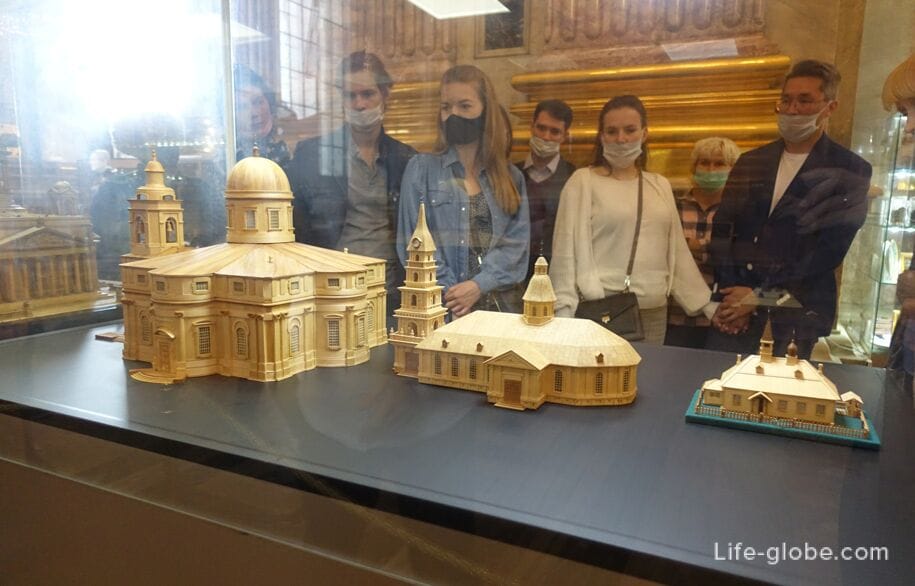
Fourth (current) St. Isaac's Cathedral replaced the third, whose appearance, disproportionate and squat, did not correspond to the front face of the center of St. Petersburg. Alexander I decided to build a new cathedral, but with the preservation of part of the third cathedral.
The altarpiece of today's cathedral is the remaining part of the third St. Isaac's Church.
The cathedral was built from 1818 to 1858 by the architect of French origin Auguste Montferrand, who also authored the project Alexander Column on the Palace Square in St. Petersburg.
In St. Isaac's Cathedral there is a bust of the architect O. Montferrand (A. Foletti, 1850-e. Marble, granite, porphyry, slate, quartzite). Montferrand himself had seen this ceremonial bust, and he liked it.
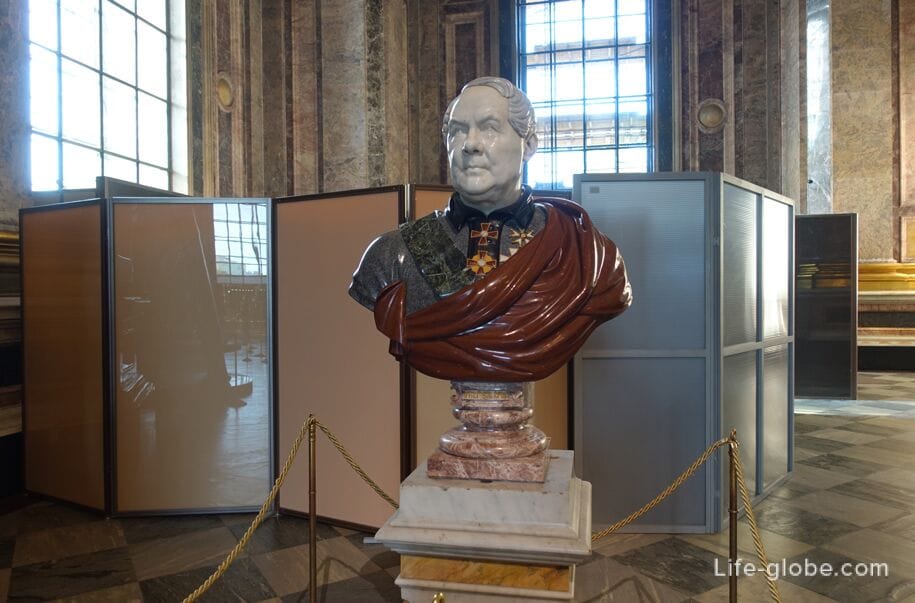
St. Isaac's Cathedral was consecrated under Alexander II.
During the construction of the cathedral, the most advanced technologies were used at that time.
One of the most difficult tasks during the construction was the installation of 48 monolithic granite columns in the porticos of the cathedral, each of which was chipped by hand from the common monolith layer in the Piterlax quarry, near Vyborg. The columns were delivered to St. Petersburg on barges.
To install the columns, wooden scaffolding (three spans of four vertical posts) with a system of blocks was erected. Each column was sheathed with felt, reinforced with ropes, laid horizontally and lifted with 16 capstans driven by people. Such a simple system allowed 128 workers to lift and install a column with a height of 17 meters and a weight of 114 tons in 40-45 minutes.

In St. Isaac's Cathedral there is an authentic model of the scaffolding for the installation of the columns of the porticos in 1/16 natural size (19th century. Wood, metal).
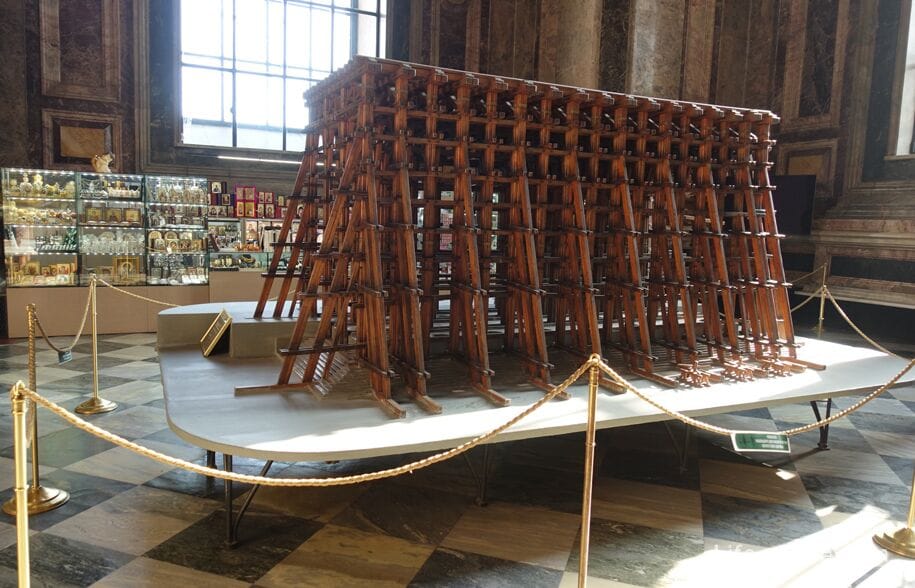
After the construction of all the porticos, which took 2 years, they began to build the walls. The walls are brick with marble cladding. The thickness of the walls of the cathedral is from 2.5 to 5 meters.
The dome of the cathedral has a complex three-arched system of metal. There are many voids inside the dome. Between the lower vault and the middle one, 100 thousand clay pottery pots were installed, for thermal insulation and acoustics.
In the cathedral there is a model of the dome section.
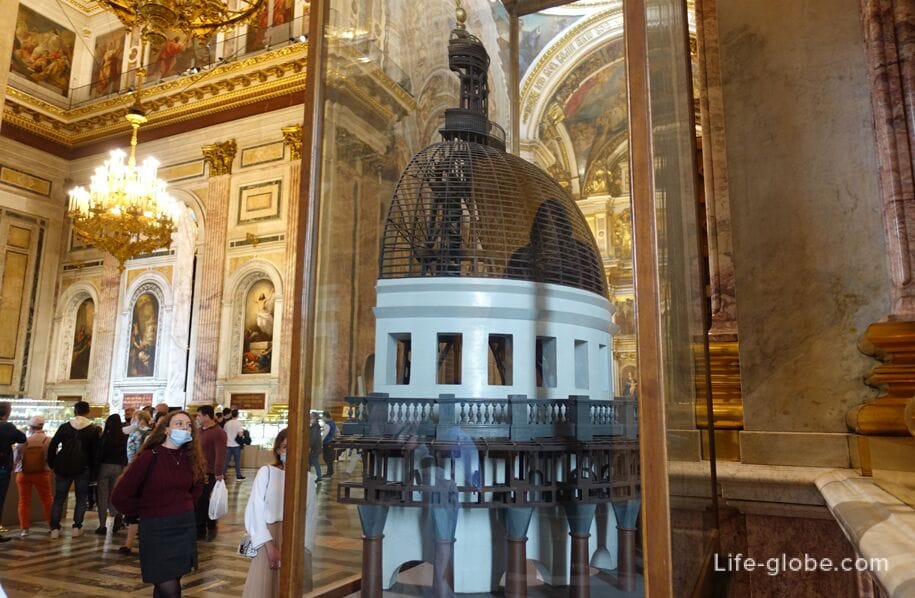
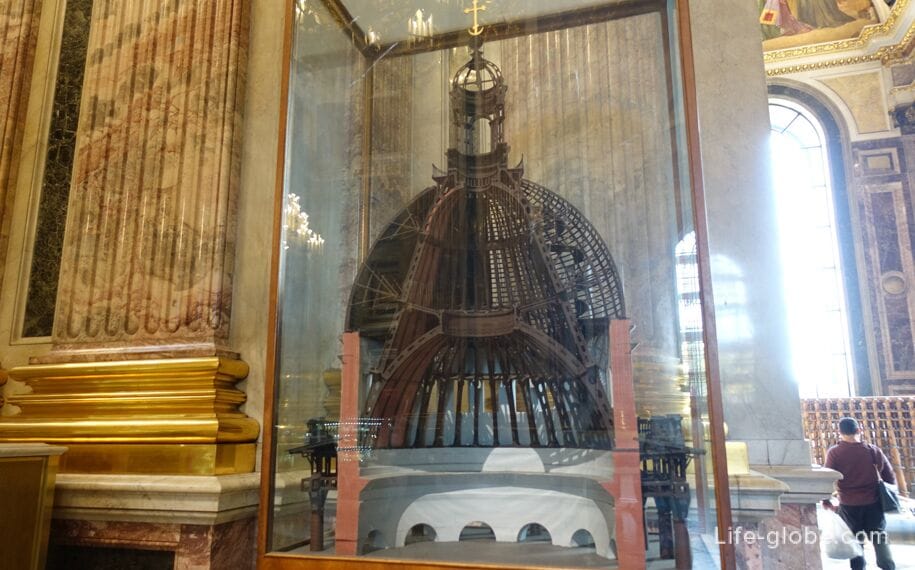
The outside of the dome is covered with copper sheets, which were gilded through fire (amalgam gilding). The composition of mercury and gold was applied to the sheet and heated. The mercury evaporated, and the gold covered the sheet in an even layer. Gilding was repeated three times.
All the domes were gilded with 100 kilograms of gold and 300 kilograms of gold for the interior decoration of the cathedral.
During the Great Patriotic War, the dome was covered with gray paint to make it less noticeable. After the war, the dome was simply cleaned up.
From 1858 to 1929, St. Isaac's Cathedral was a Cathedral.
Today, the monumental and majestic image of the cathedral still adorns the center of St. Petersburg and annually attracts about 4 million tourists.
The style of the cathedral is late Russian classicism, which was characterized by monumentality, grandeur, strict proportions and connection with the surrounding buildings.
The five-domed temple with a central dome decorated with an eight-headed lantern has four porticos.
A large number of sculptures adorn the exterior of the cathedral building. The main theme of the sculpture complex is the glorification of Jesus Christ, scenes from his earthly life and the Passion of the Lord.
On the balustrade of the main dome there are 24 bronze angels.
The spectacular combination of dark red columns of the porticos, the colonnade of the main dome and the plinth of the building with gray marble walls and gilded domes gives the entire appearance of St. Isaac's Cathedral an unsurpassed grand appearance.
The abundance of sculpture slightly overloads the visual image of the cathedral, but, at the same time, gives it pomp and solemnity.
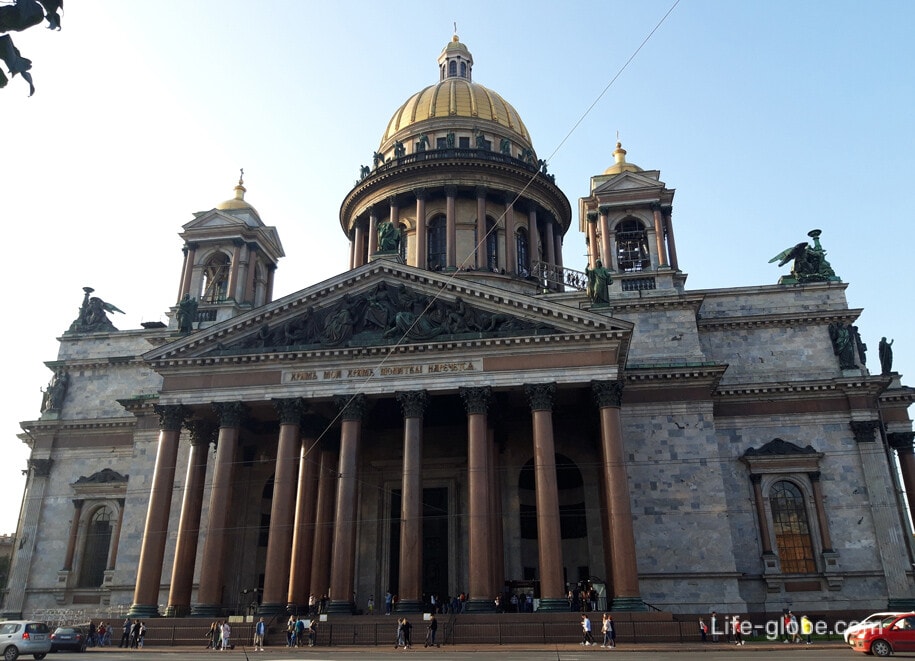
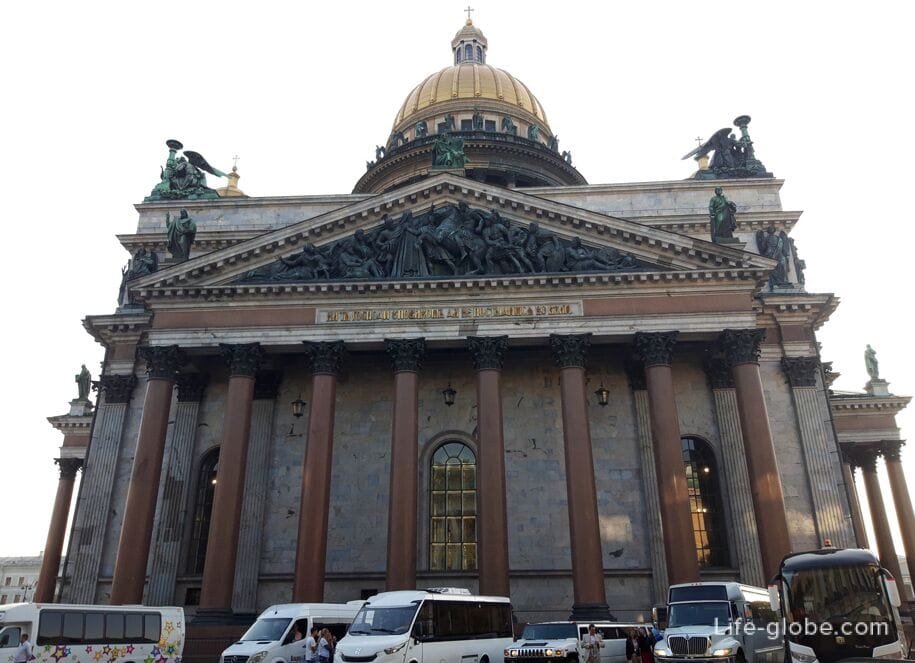
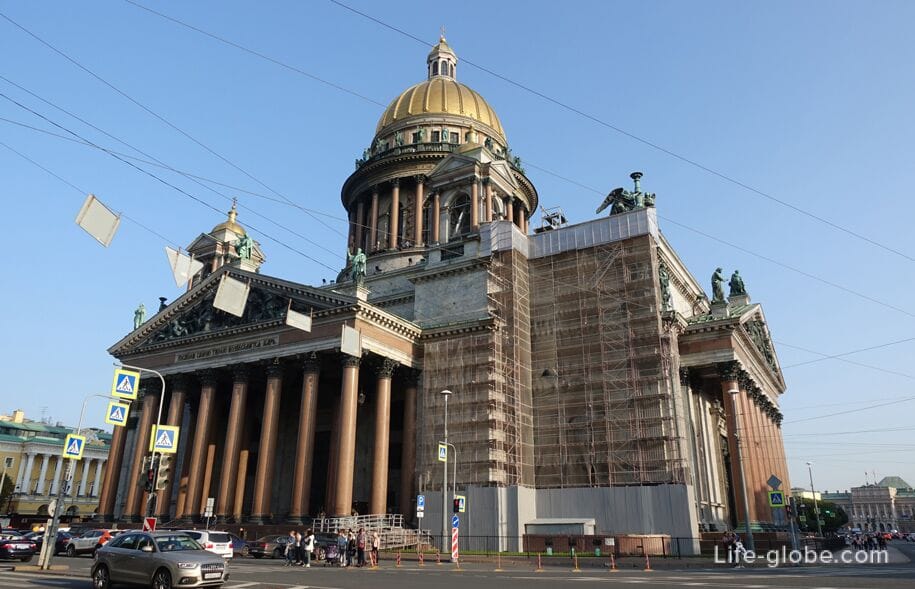
View of St. Isaac's Cathedral from Alexander Garden


The interior of St. Isaac's Cathedral is designed in an eclectic style. It has richly decorated decoration, including mosaics, paintings and stone.
The walls are lined with white Italian marble, the bottom of the walls-black slate, columns and pilasters-light pink and cherry Tivdian. In total, about 14 varieties of marble were used for the facing of the cathedral.
The interior of the cathedral is divided into three naves by massive ceilings with arched openings (aisles).
In the cathedral there are altars: the main one is dedicated to Isaac of Dalmatia, the other two-to the Great Martyr Catherine and the Blessed Alexander Nevsky.
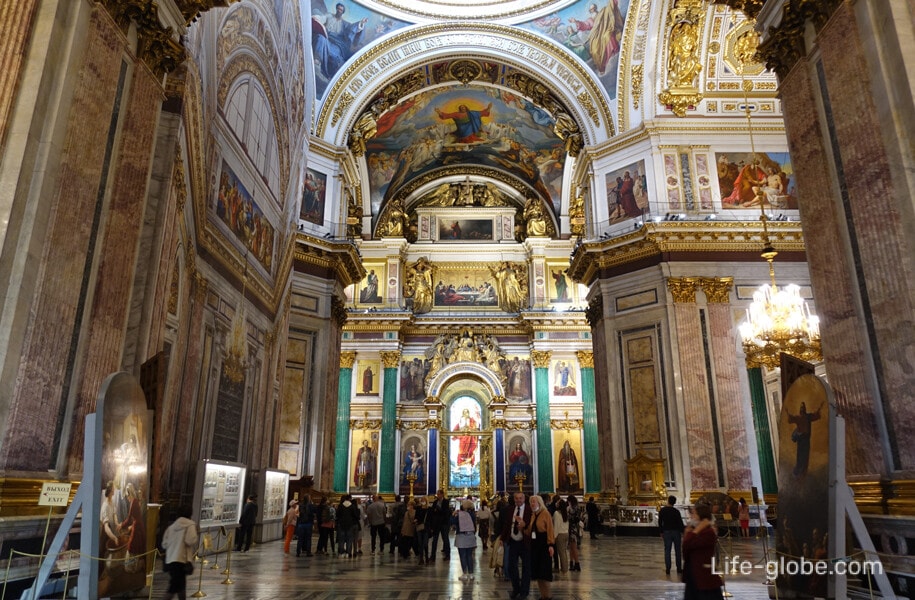
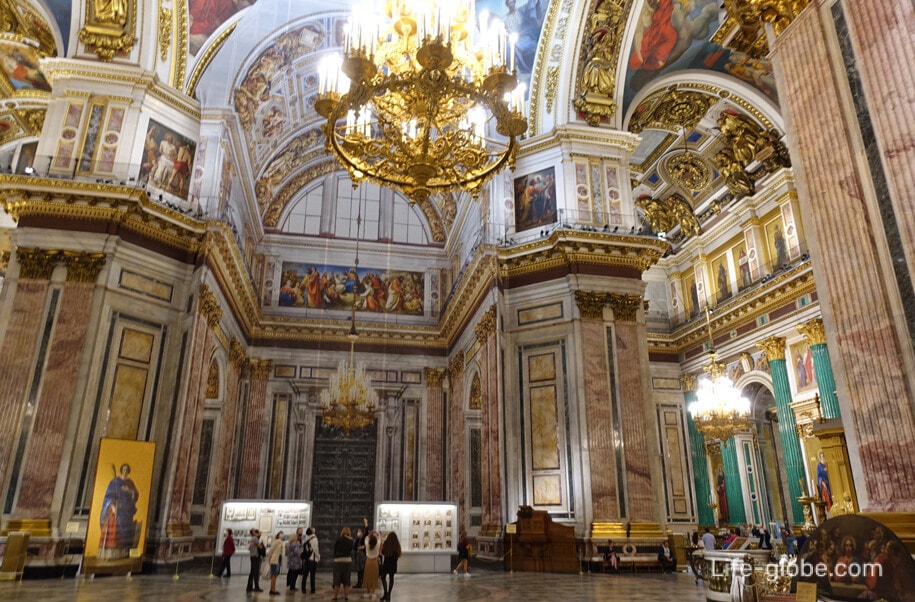

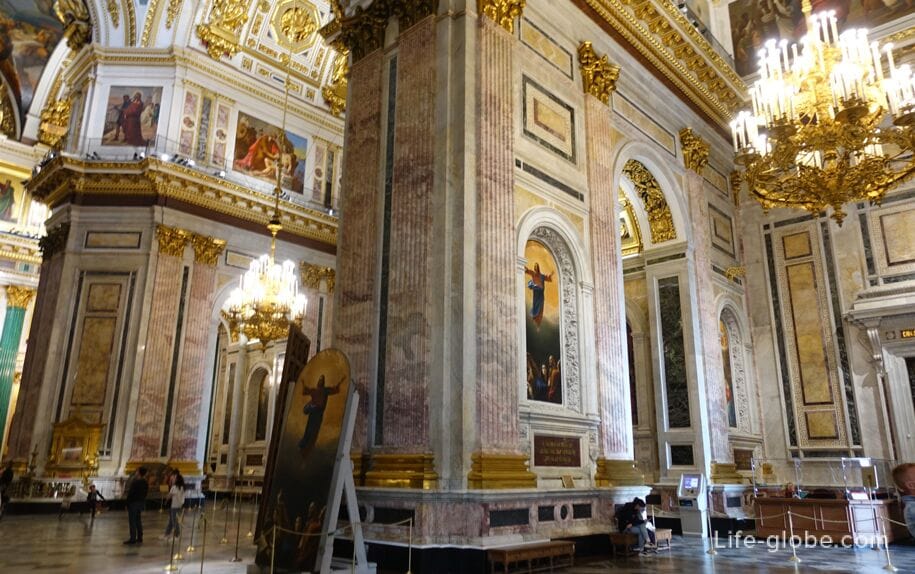

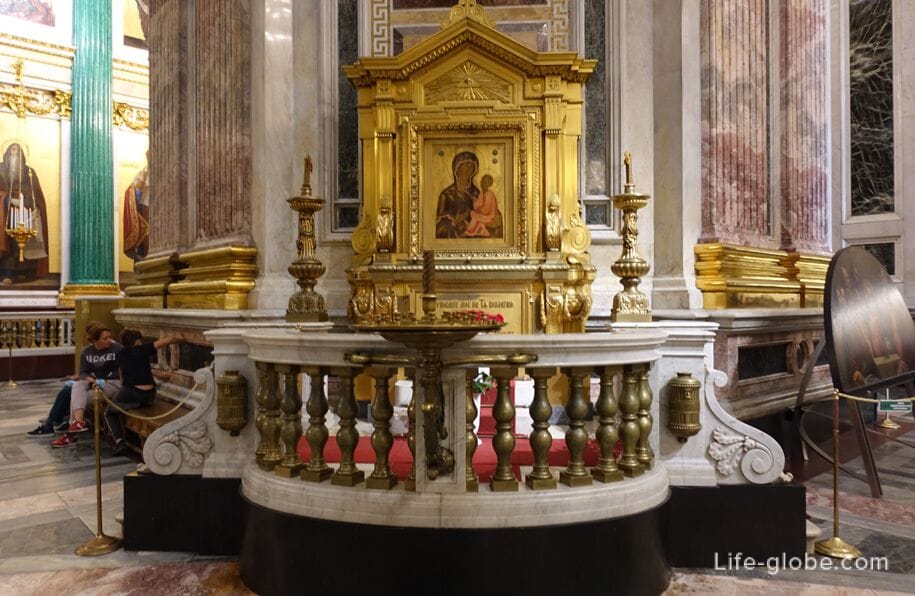
The cathedral is illuminated by seven large chandeliers. The weight of each chandelier is 3 tons.
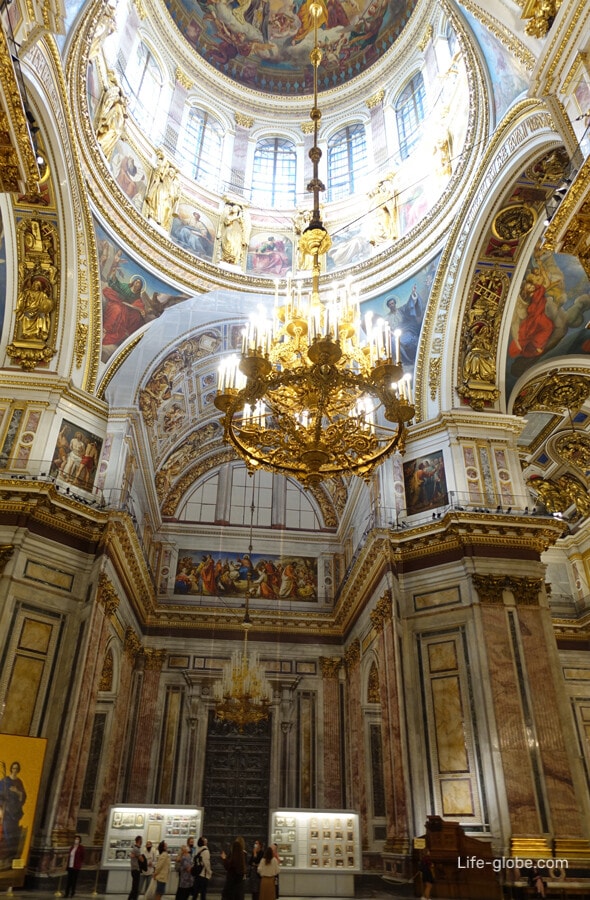
The vaults of the cathedral are painted by the best of the best masters of their craft.
The paintings in the cathedral are dedicated to the holy scriptures and go from the beginning of the cathedral (the western door) to the iconostasis-from the creation of the world (Adam and Eve) to the coming of Jesus Christ and the last judgment.
Such a system of decoration of churches allows you to fully reveal the essence of Christian teaching in vivid visual images.
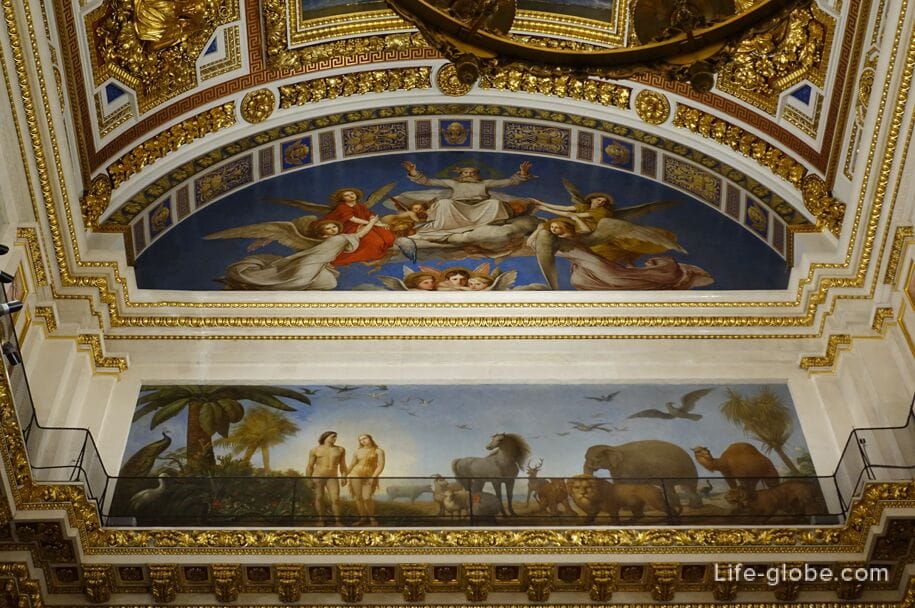
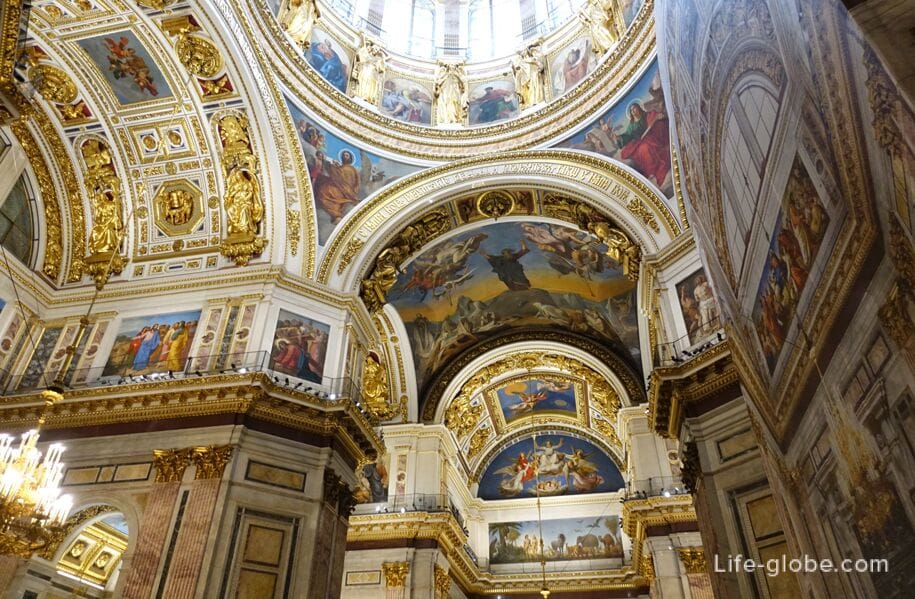
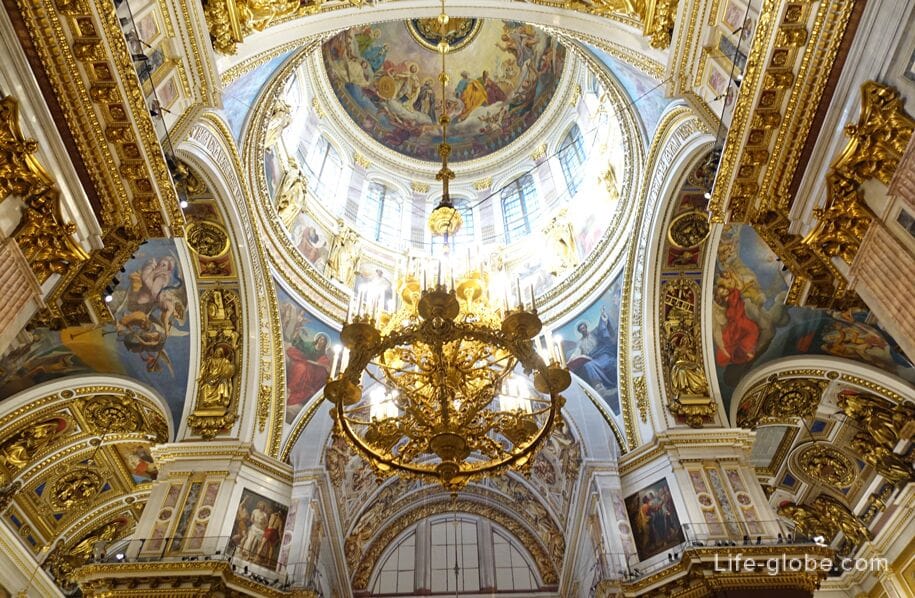

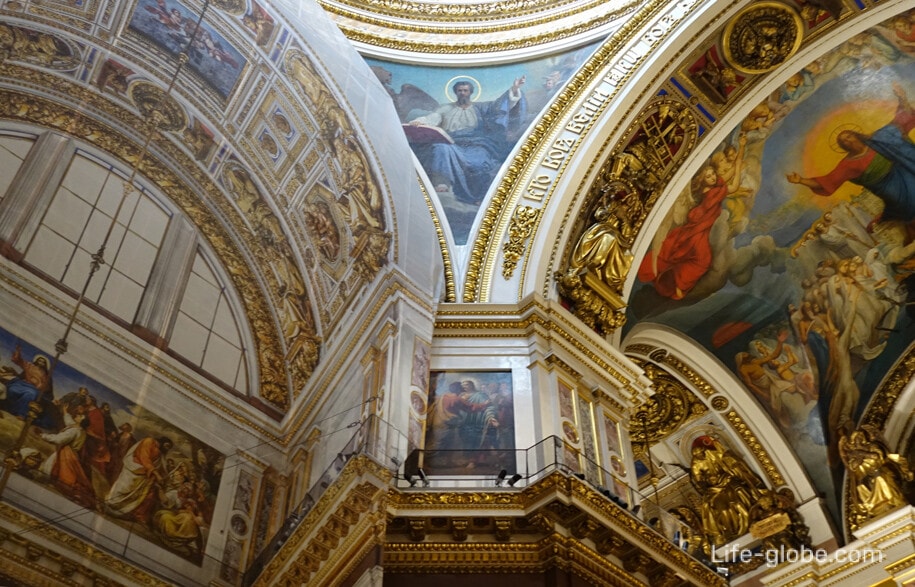
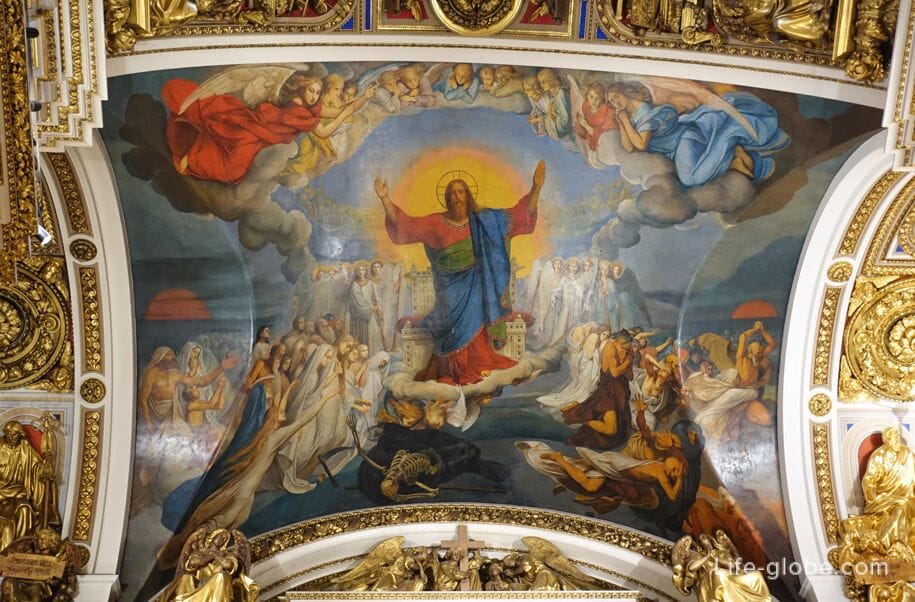
Some works in the cathedral have been replaced with traditional paintings, which deteriorate quickly in the climate of St. Petersburg, with eternal mosaic paintings, which do not age, do not deteriorate and do not fade.
There are 62 mosaics in the cathedral.
The mosaic was made up of small pieces of smalt, an alloy of glass and metal oxide. At that time, 12 thousand shades of smalt were known, which made it possible to create works that were unsurpassed in beauty and depth. The seams were tinted with colored wax.
The best example of mosaic church painting in St. Petersburg is Saviour on the Blood (Church of the Resurrection of Christ), which is considered one of the largest collections of monumental mosaics in Europe.
The largest mosaic in St. Isaac's Cathedral is the "Last Supper", located above the royal gates of the iconostasis. Its size is more than 18 square meters.

Other mosaic icons in the cathedral:
- Ascension of the Lord. Mosaic workshop of the Academy of Arts. 1900s. From the original by T. Neff;
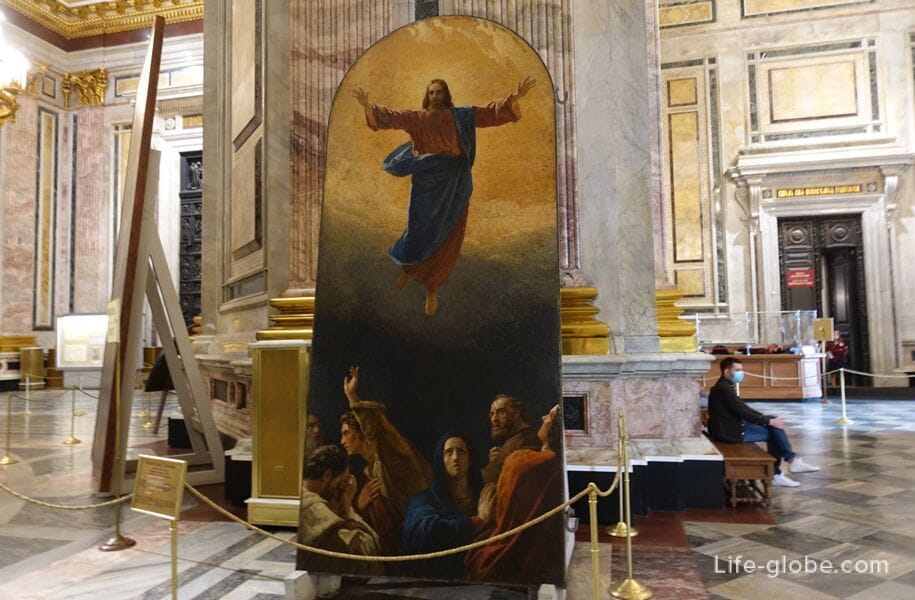
- The Nativity of the Virgin. Mosaic workshop of the Academy of Arts. 1900s. Based on the original by T. Neff;
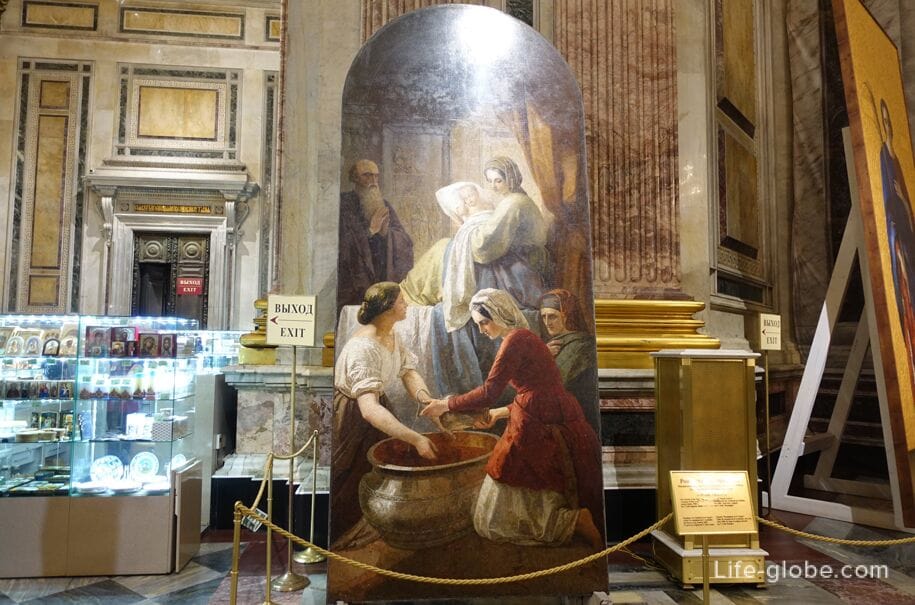
- The Last Supper. Mosaic workshop of the Academy of Arts. 1900-1902. From the original by N. Maikov;
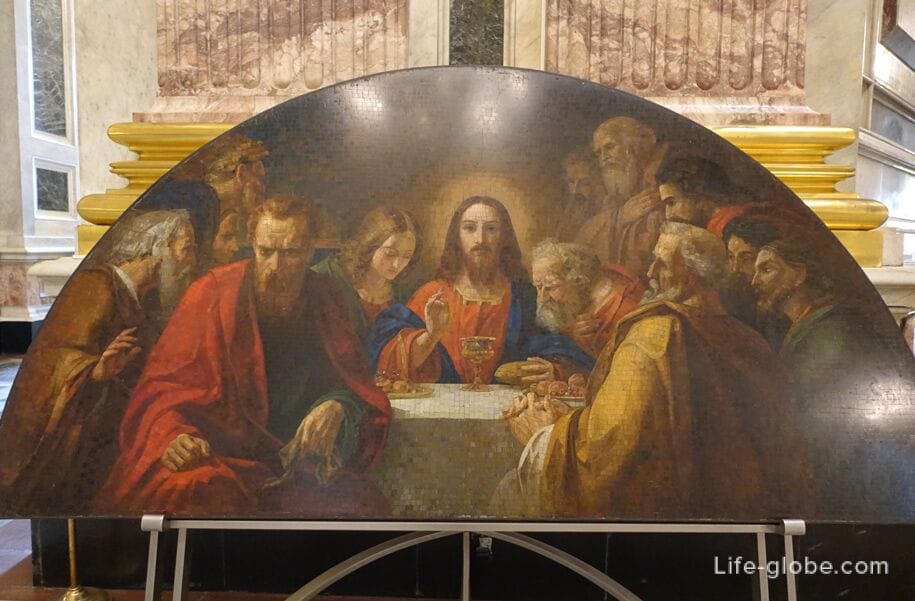
- Saint Peter. Mosaic workshop of the Academy of Arts. The first decade of the 20th century. From the original by P. Basin.

In the drum of the central dome, there is a painting depicting the 12 disciples-the apostles and the Mother of God in glory, who sits on a throne in a blue vestment. Next to the Mother of God, John the Baptist is depicted with his hand raised.
The raised arm from the elbow to the fingers is 2.5 meters.
Above in the dome is a dove-a Christian symbol of the Holy Spirit. The dove, like the surrounding angels sculptures, is made in electroplating and is hollow inside (hollow).
The whole sculpture is gilded, the dove is copper and covered with silver. The wingspan of a pigeon is 2 meters 6 centimeters.
The diameter of the dome of the cathedral is 22 meters.
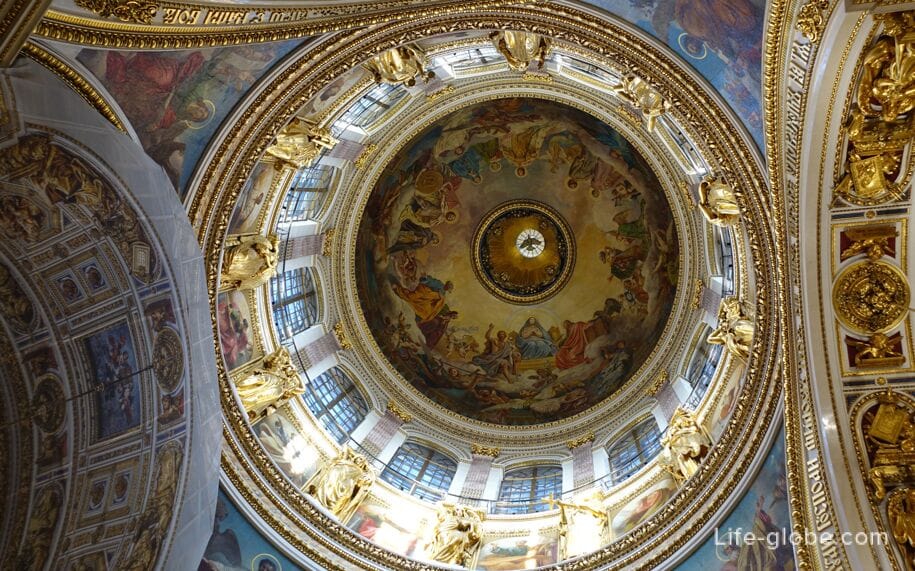
The large "sculptural" bronze doors also attract attention in the cathedral. The largest is the main door - the western one, its area is 42 square meters, and its weight is more than 20 tons.
The built-in gear mechanism allowed and still allows today to easily open and close the door for two people.
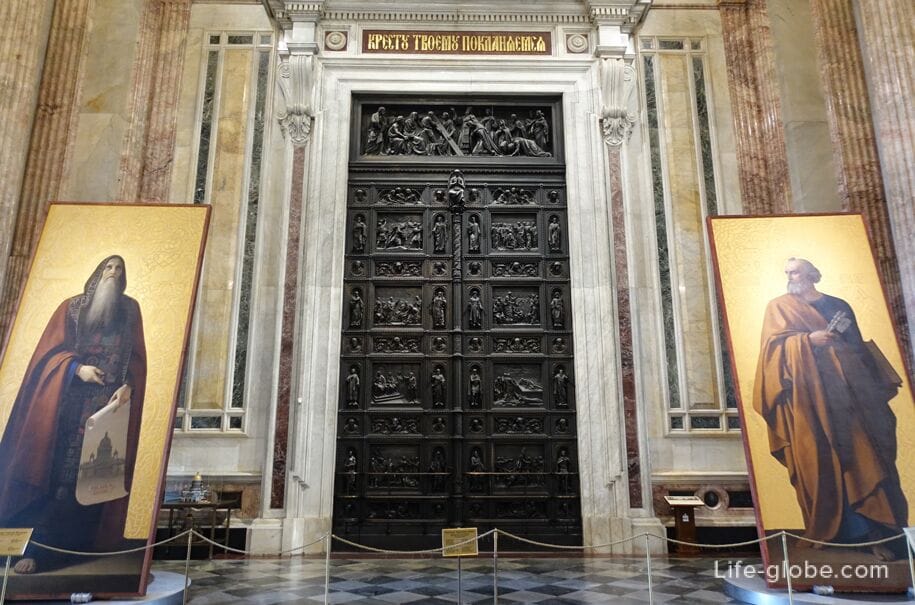
In St. Isaac's Cathedral, both in the floor and on the walls, there are ventilation grilles - this is the so-called Amosov heating system, which heated the cathedral by penetrating hot air.
In the basements there were stoves, which were heated with wood and coal. There was not enough power for heating, and even in the summer it was +8 degrees in the cathedral.
Then the cathedral was connected to the city's central heating network. Now in the winter in the cathedral + 19-+18 degrees, humidity-50-60%.

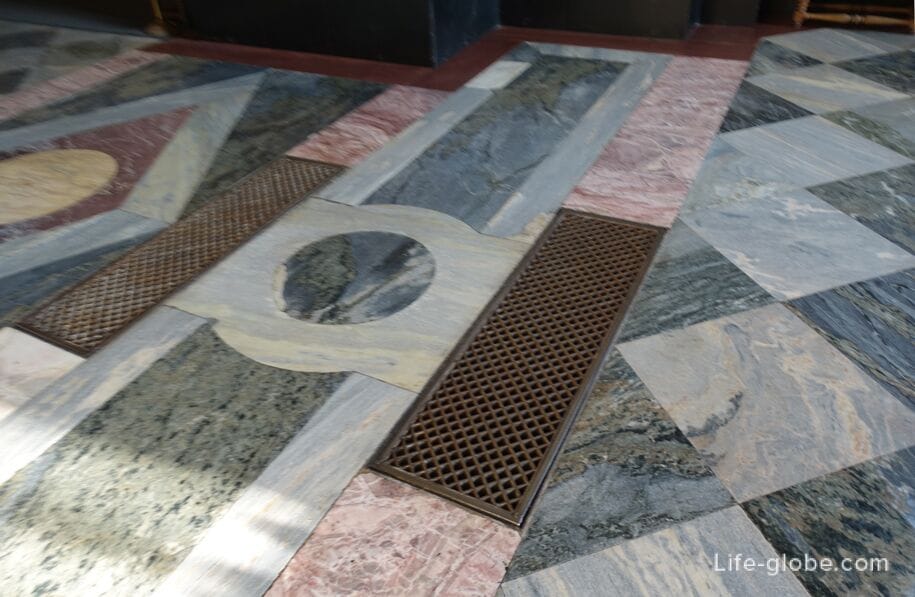
The iconostasis of the cathedral impresses with the splendor and richness of its decorative design: bright icons, gilded sculptures, the beauty of malachite and lapis lazuli columns.
All the saints of the first and second tiers of the iconostasis are the holy co-names of Peter I and other members of the royal family. The third tier is the prophets.
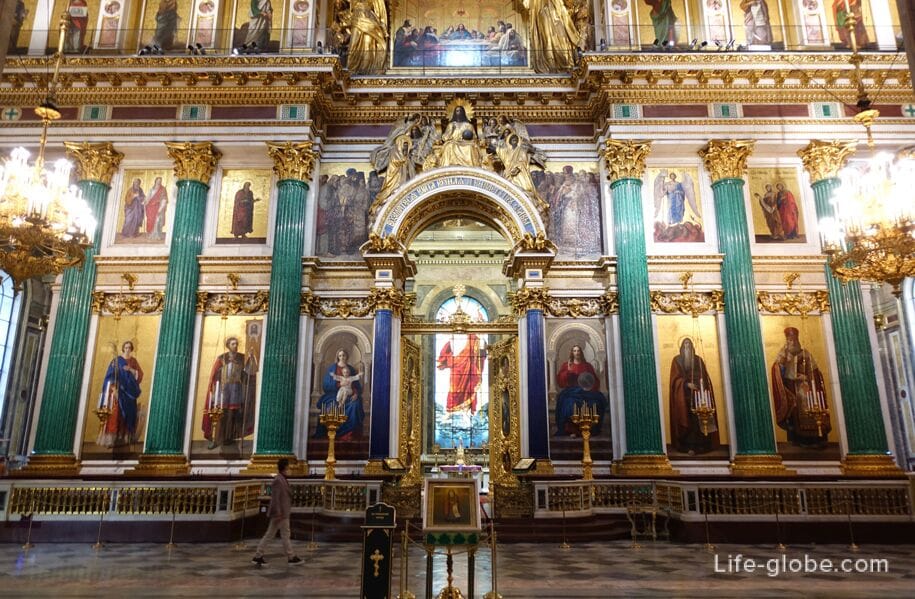

On the sides of the royal gate in the first row of the iconostasis are the icons "Jesus Christ" and "The Mother of God".

From Jesus Christ to the right, the first icon - the main temple icon-is always a saint in whose honor the church is built. In St. Isaac's Cathedral, this is St. Isaac of Dalmatia.
Further to the right - Saint Nicholas the Wonderworker. This mosaic icon is considered the best in the cathedral. She was taken to London, where she won the gold prize.
Next - the Holy Apostle Peter.
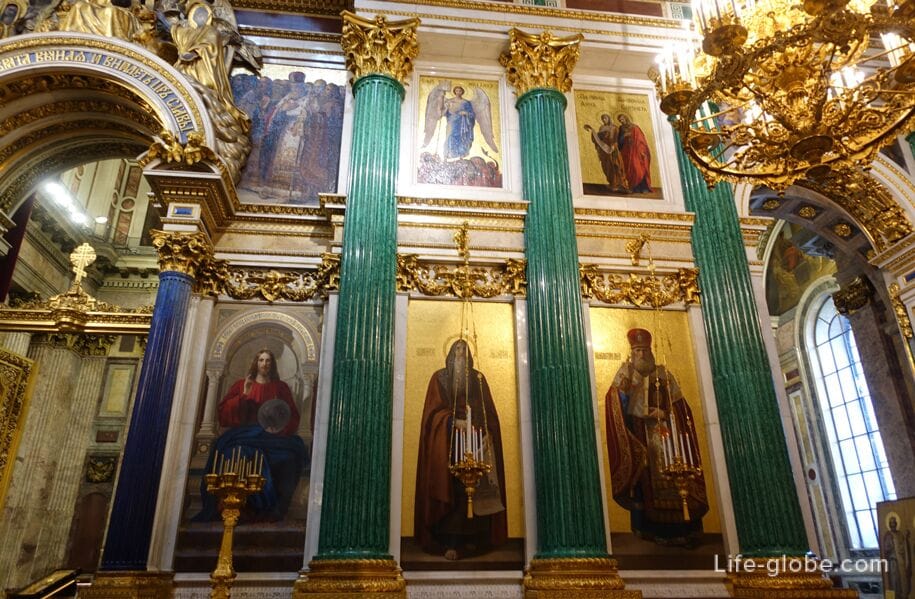
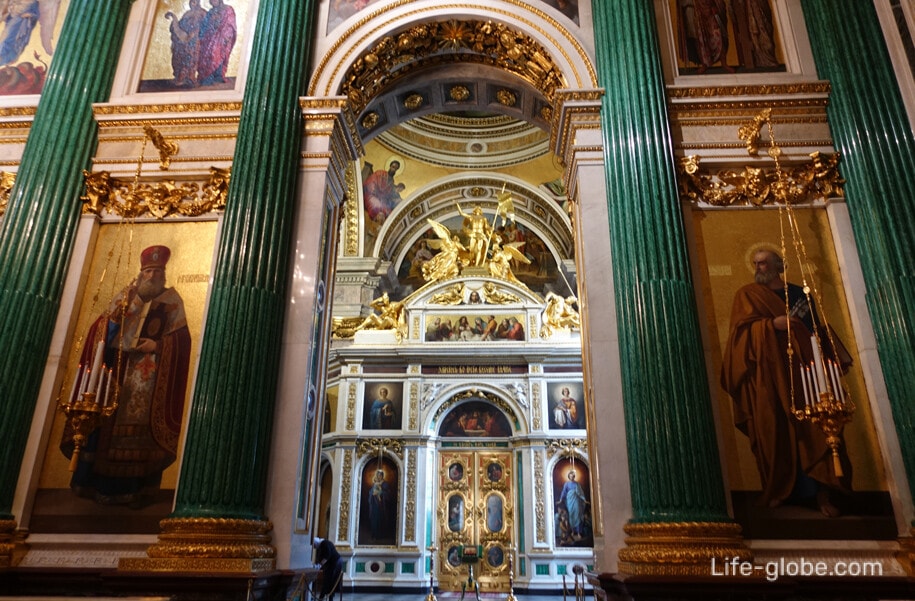
To the left of the Mother of God are Saint Alexander Nevsky, Saint Catherine with a palm branch, and Saint Paul the Apostle.

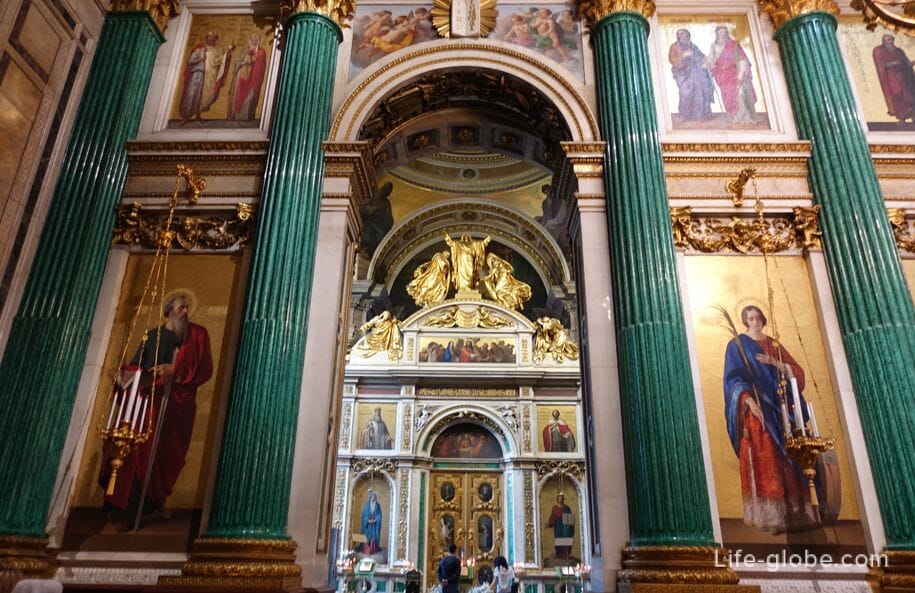
Behind the royal gates there is a stained-glass altarpiece (painted on glass) - the image of the Risen Christ. The stained glass window has 28 square meters. Cast in Munich (Germany).

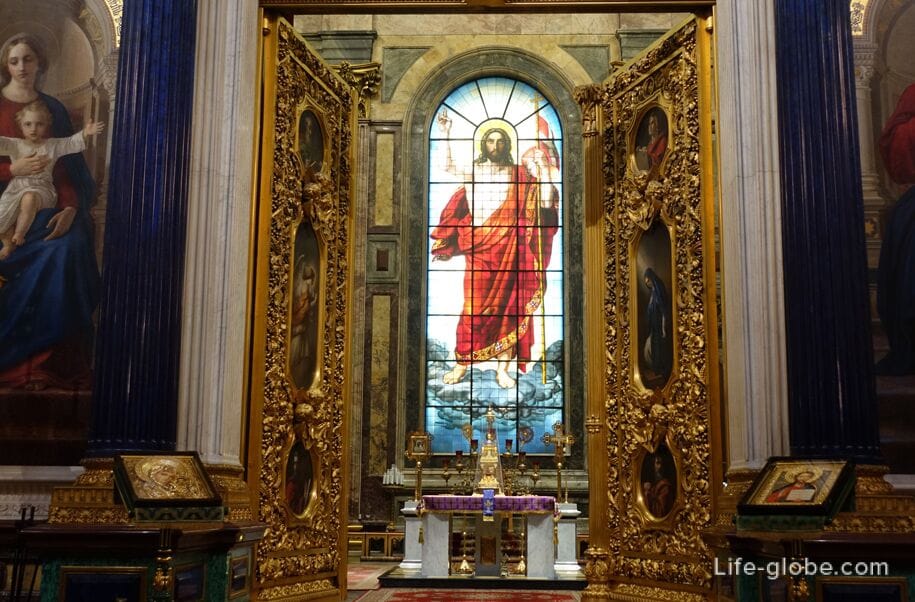
Two limits of the church: St. Catherine and Alexander Nevsky.
In the small left limit are, among other things, the shoe of St. Spyridon, the relics of the saints and a wooden crucifix.
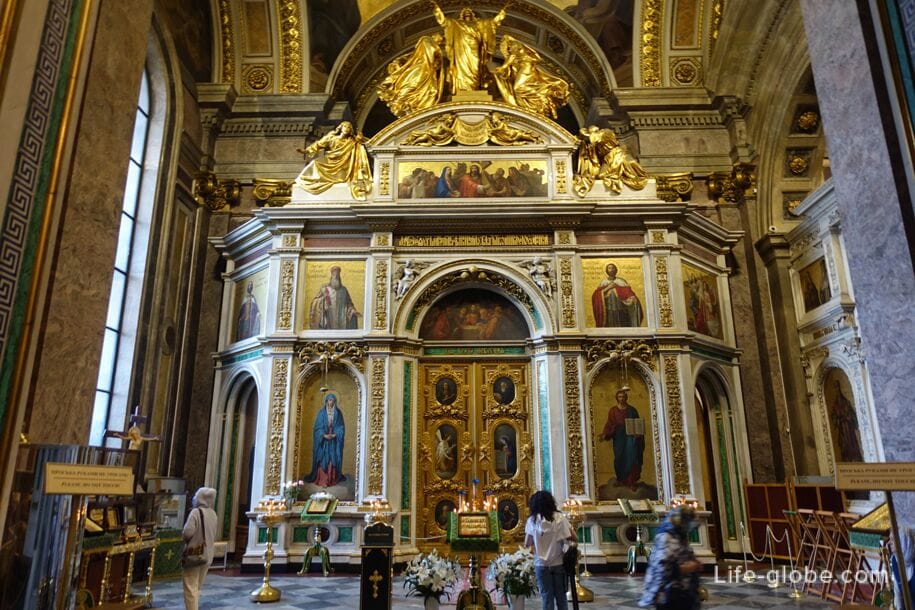
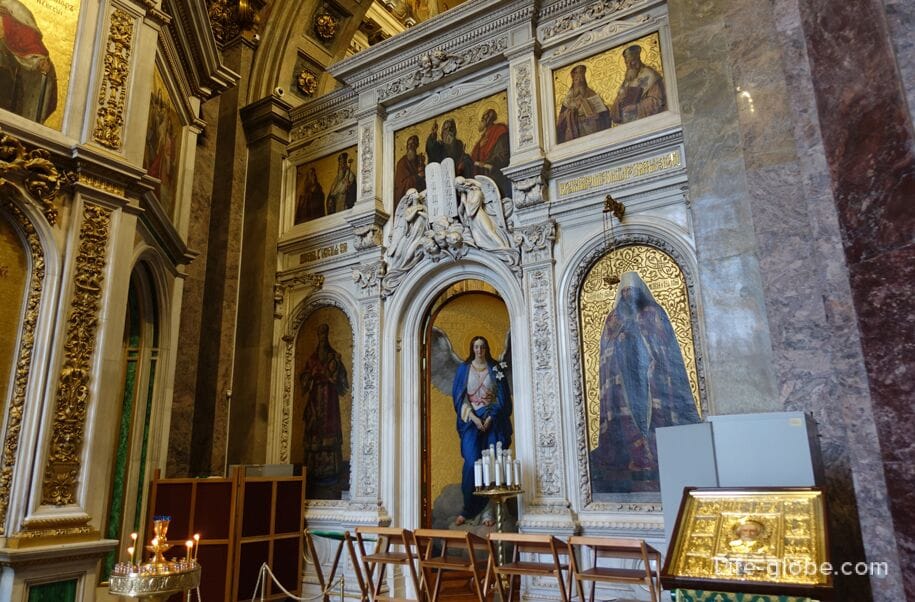
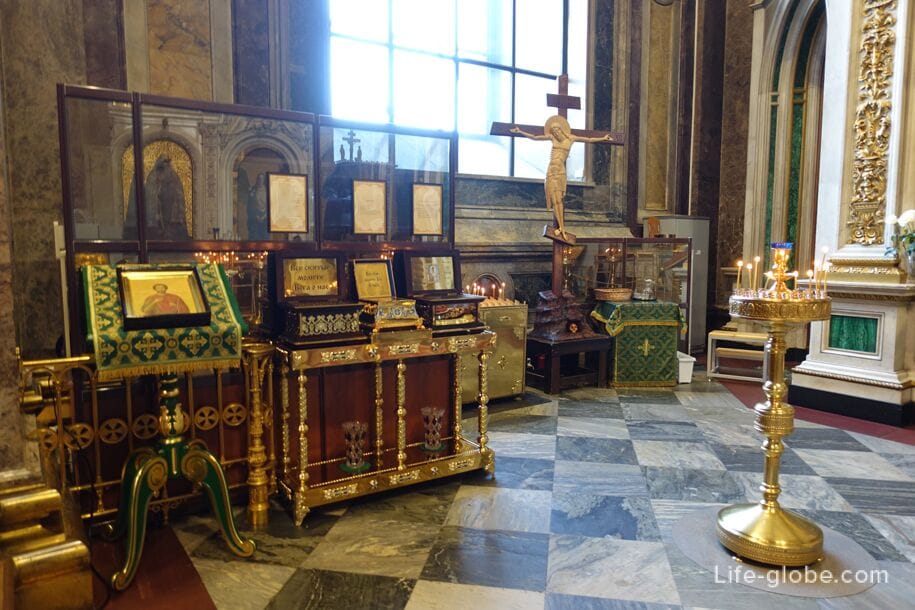
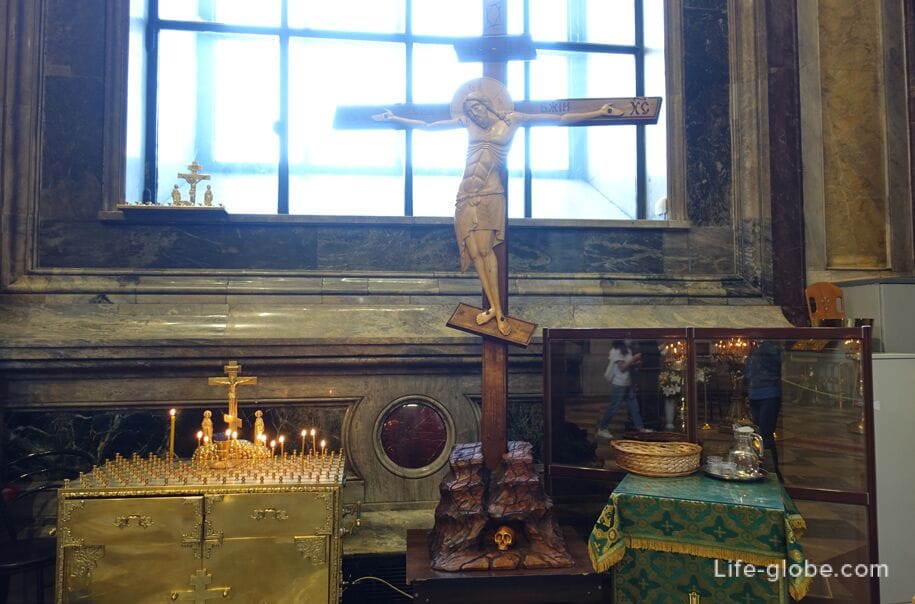


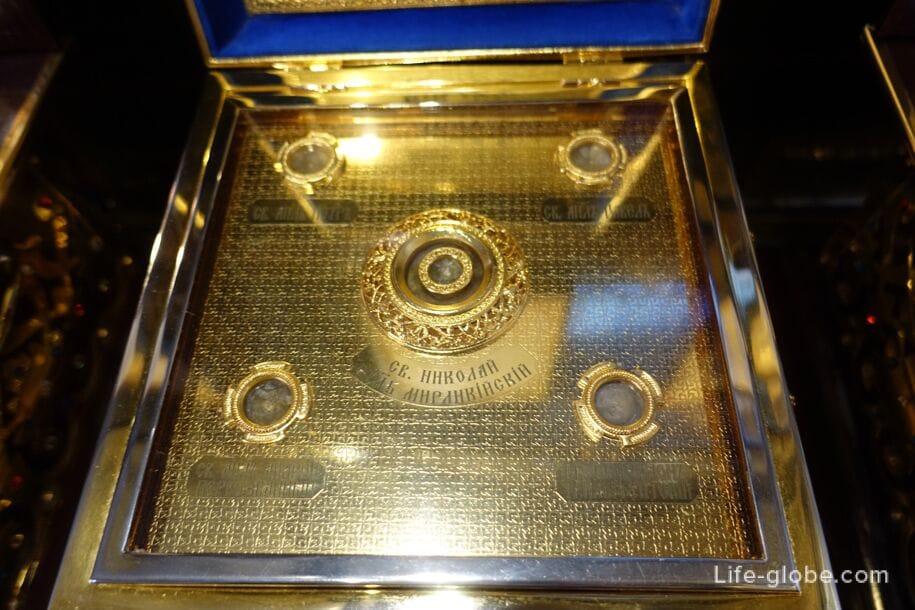
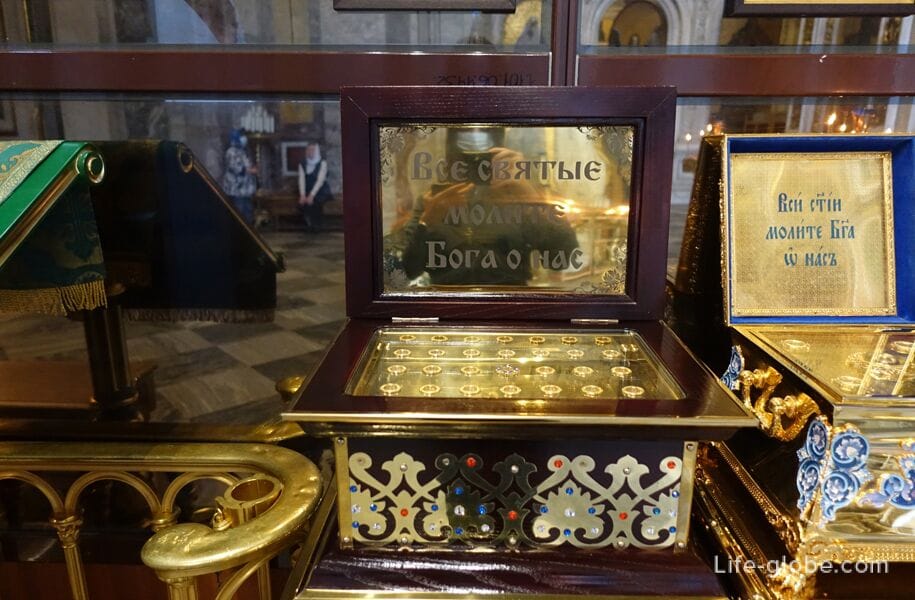
At a height of 43 meters, around the drum of the dome of the cathedral, there is a colonnade consisting of 24 columns, 14 meters long and weighing up to 67 tons.
In the drum there are 12 giant windows, and in the open part of the colonnade there is a circular observation deck, giving beautiful panoramic views of St. Petersburg. Learn more about the colonnade and observation deck…

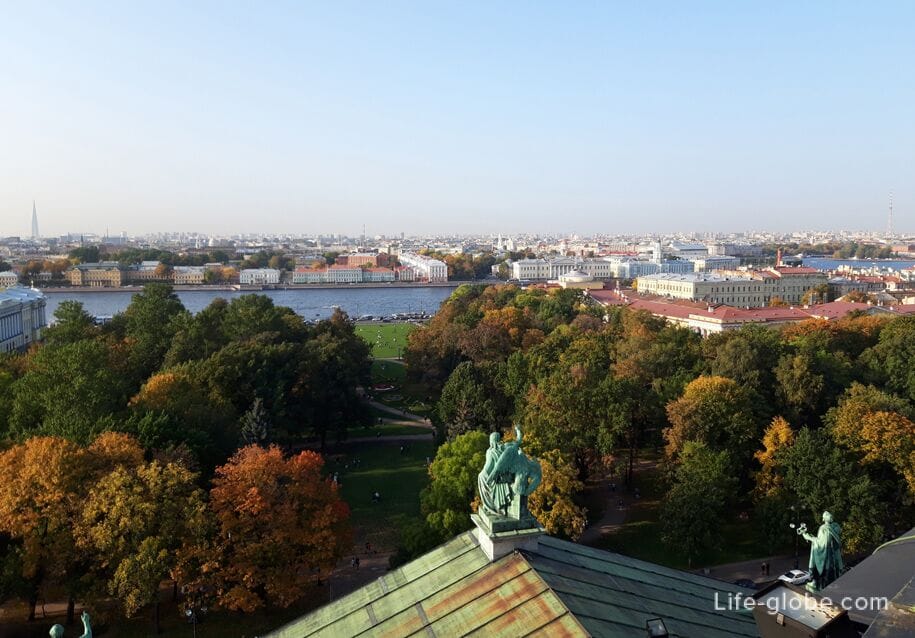
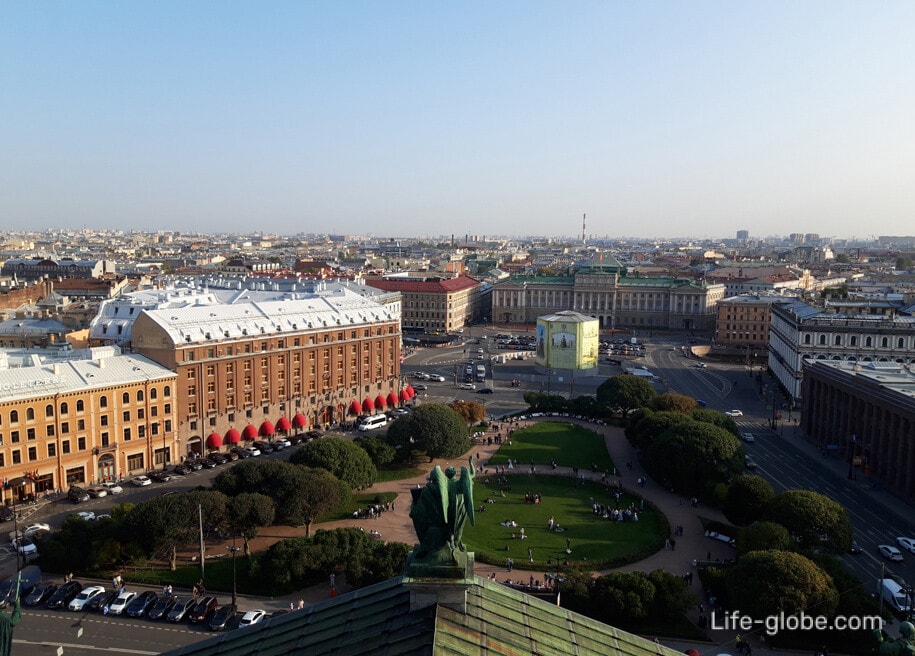
In the basement of St. Isaac's Cathedral there is an exhibition - memorial exhibition "To remember...".
The exhibition was opened on the occasion of the 60th anniversary of the complete liberation of Leningrad from the Nazi blockade. It is dedicated to the museum staff who managed to save the unique exhibits of the museums of Leningrad and its suburbs, which were not evacuated to the rear during the harsh wartime.
You can visit the exhibition for free. For groups-by pre-issued request. For individual visitors, free guided tours of the memorial exposition are provided on certain days and hours.
Since the days, hours and conditions of visiting the exhibition may change, we recommend that you check the information immediately before visiting, on the official website of the cathedral.
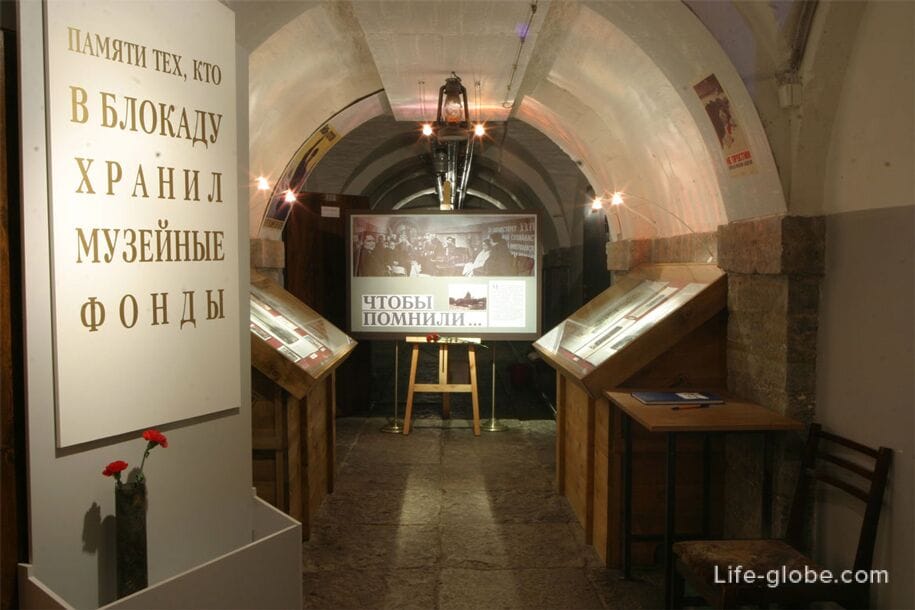
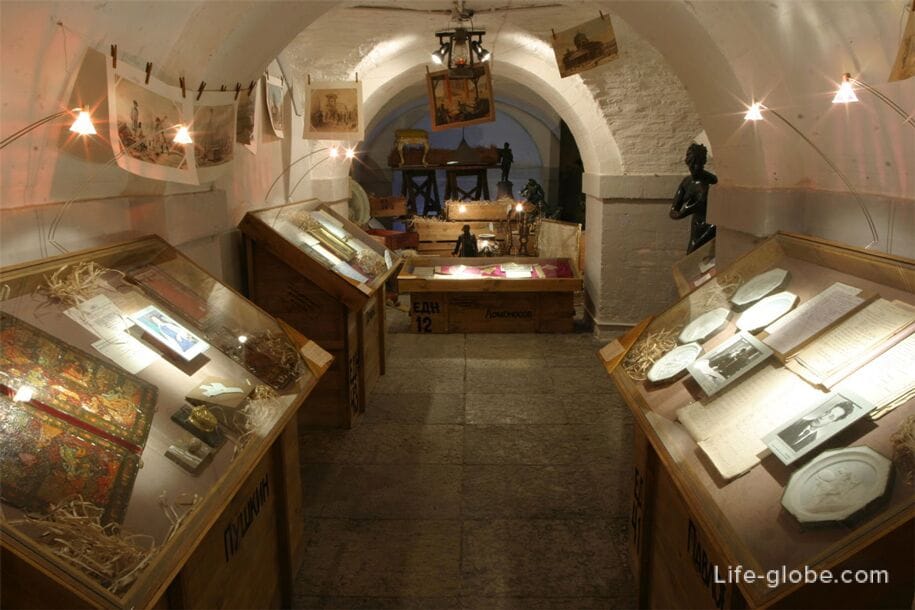
St. Isaac's Cathedral is a museum-monument, part of the state museum-monument "St. Isaac's Cathedral".
Services and concerts are also held in the cathedral.
A visit to the cathedral is possible for a fee. Tickets can be purchased at the ticket offices located near the cathedral or purchased in advance-on the official website of the museum.
The cathedral offers guided tours that last about 25-30 minutes.
You can visit the cathedral for free during the services.
The colonnade of the cathedral (observation deck) can be visited for a fee. The entrance to the colonnade is separate.
Tickets for the colonnade can also be purchased at the ticket offices located near the cathedral or purchased in advance-on the official website of the museum.
We recommend that you check the opening hours of the cathedral and the colonnade, the time of services and concerts, as well as the cost of tickets immediately before visiting.
Website of the cathedral-museum: cathedral.ru.
St. Isaac's Cathedral is located in the heart of St. Petersburg, near the Palace Square and Admiralty, at: St. Isaac's Square, 4.
St. Isaac's Cathedral and the colonnade can also be visited with one of the excursions
All accommodation in Saint Petersburg, including in the city center and near St. Isaac's Cathedral, can be viewed and booked here